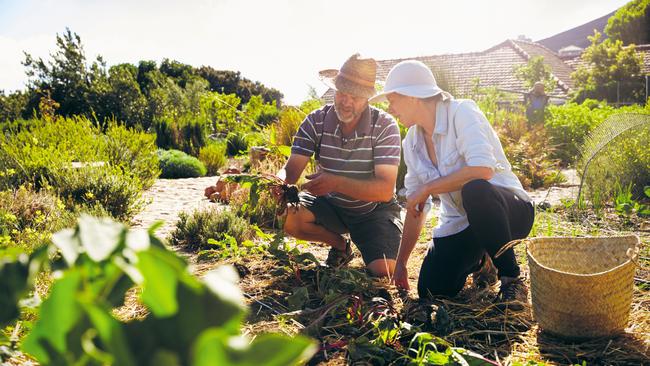Small towns likely to be the biggest winners from the COVID lockdown
With all the bad economic news it comes as a surprise to learn that not all industries lost jobs during the lockdown.

With all the bad economic news it comes as a surprise to learn that not all industries lost jobs during the lockdown.
Six out of the 19 official industries managed to create new jobs since February. The successful six industries (utilities, agriculture, public admin, finance, real estate, wholesale trade) collectively added 100,000 jobs — not nearly enough to make up for the 922,000 jobs lost in the contracting 13 industries but enough to warrant a closer look at the geographic concentration of these job-creating industries.
Overall, 19 per cent of all Australian jobs belong to one of the six growing industries.
Among Australia’s 100 largest settlements the public service and military towns have an employment profile that makes them very resilient during the COVID lockdown. In Canberra 36 per cent of all jobs belong to the growing industries — in times of economic downturns government jobs are the safest of all.
Other sizeable cities with a COVID resilient job profile include Darwin (27 per cent), where public admin and military jobs dominate, Alice Springs (24 per cent) and Port Lincoln (23 per cent). These towns will likely fall relatively softly in the COVID aftermath.
Outside of our 100 largest cities some small towns have even more promising employment profiles. Take Mundubbera in the North Burnett Region of Queensland for example. The town of about 1300 residents has half its jobs concentrated in the six growth industries. This is largely due to its self-proclaimed status as the “Citrus Capital of Queensland” (don’t ask neighbouring Gayndah what they think of that claim though).
There are plenty of agricultural towns like Robinvale in Victoria (36 per cent), Woolgoolga in NSW (35 per cent), in the 2000 to 5000 resident range that have a very secure job profile that will look increasingly attractive to city dwellers too.
Four major trends besides the secure job profile speak in favour of regional Australia.
First, the traditional regional strengths of agriculture and manufacturing will be strengthened in post-COVID Australia. Empty supermarket shelves were an unpleasant first for most Australians. Stronger focus on homegrown produce will benefit the regions.
Having been caught out with too few companies being able to build ventilators or medical grade masks locally, Australia will improve its supply chain sovereignty by strengthening local manufacturing. Additional manufacturing capacity will favour the more affordable regions and the outer suburbs.
Second, government on all levels faces high unemployment figures. The easiest way to create jobs is to invest heavily into infrastructure. We’ve already seen infrastructure projects being brought forward. Rail and road connections between the capital cities and regional centres will be the focus. The new infrastructure jobs will help to get the construction sector through the slump triggered by the prospect of years of lower migration numbers.
Third, Australian city dwellers have changed their attitudes towards country life. Turns out once you have been locked up in a small apartment or a house with tiny backyard and loud neighbours for a couple of months you embrace the idea of low density living.
There are of course wonderful low-density suburbs in our capital cities, but they come with a very high price tag.
On top of this the biggest demographic driver in the 2020s will be Millennials (born 1982 to 1999) reaching the family formation stage of the life cycle. This means the biggest population cohort will be looking for family-sized homes. Such 3- and 4-bedroom homes are much more affordable in regional towns and might just be the reason for young couples to leave the inner suburbs of Melbourne and Sydney behind.
Fourth, the lockdown forced countless workers to work from home. There will be many workers who won’t be willing to give up their new-found flexibility.
When making a housing decision, workers now can look for their dream home without worrying too much about the distance to their place of work. The WFH crowd will demand a separate study (or two) in the home. The larger the home you demand, the further away from the central office towers you will need to look. Regional Australia offers wonderful and affordable large homes — especially when your household earns an inner-city income (or two).
So far, the regional revival across Australia is but an intellectual argument. We won’t see official population estimates to proof the regional growth theory until the end of March 2021 when the ABS releases the official regional population estimates.
In the meantime, we can look to up-to-date residential property data from Ripehouse Advisory to gain an understanding of how the Australian people reshuffle themselves post-COVID.
Many local government areas in the big cities saw steep declines in residential property transactions from July 2019 to July 2020.
When expected migrants don’t show up, demand for property melts away. Counterintuitively this doesn’t tend to show in median property sales figures. Unsold apartments don’t make their way into the calculation and the median sales price for inner-city neighbourhoods actually go up as the top end of the market continues to show movement.
Most areas that saw more residential property transactions in July 2020 than in July 2019 are in regional Australia.
The biggest increase could be seen in Wodonga. Albury’s twin city saw a 75 per cent increase in property transaction over the last 12 months while recording much lower median sales prices. This decline is due to a shift towards low-priced entry-level homes such as units and apartments. When young people come and enough homes are for sale, median prices tend to fall as they buy cheaper starter homes.
In most regional towns where sales volumes went up (Ballina and Warrnambool are great examples), house prices went up accordingly. That’s simply increased demand driving up prices, especially when people on city-incomes enter a regional housing market – another indicator that regional revival is in progress.
So far, the data agrees with the intellectual argument that Australia’s small towns will be the big winners of the COVID lockdown.

